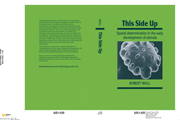Book contents
- Frontmatter
- Contents
- Preface
- Acknowledgements
- 1 Oogenesis
- 2 From oocyte to zygote
- 3 Does cleavage cut up a preformed spatial pattern?: the case of spiralian embryos
- 4 The limits of mosaicism in non-spiralian cleavage
- 5 Cellular interactions in the morula and blastula: the case of sea urchin embryos
- 6 Interactions at morula and blastula in other embryos
- 7 Interactions between moving cells: the case of amphibian gastrula
- 8 Spatial determination in the gastrulae of other groups
- 9 Determination in embryos showing partial cleavage
- 10 Patterns and mechanisms in early spatial determination
- References
- Index
9 - Determination in embryos showing partial cleavage
Published online by Cambridge University Press: 06 October 2009
- Frontmatter
- Contents
- Preface
- Acknowledgements
- 1 Oogenesis
- 2 From oocyte to zygote
- 3 Does cleavage cut up a preformed spatial pattern?: the case of spiralian embryos
- 4 The limits of mosaicism in non-spiralian cleavage
- 5 Cellular interactions in the morula and blastula: the case of sea urchin embryos
- 6 Interactions at morula and blastula in other embryos
- 7 Interactions between moving cells: the case of amphibian gastrula
- 8 Spatial determination in the gastrulae of other groups
- 9 Determination in embryos showing partial cleavage
- 10 Patterns and mechanisms in early spatial determination
- References
- Index
Summary
Many animals lay large, very yolky eggs which develop directly to a small adult: presumably they can omit larval feeding stages because of their large food store. Often such eggs cleave partially, or ‘meroblastically’, to form the embryo in a restricted area, and then the uncleaved yolk is gradually absorbed into this embryo. Such adaptations have evolved independently in a large number of animal groups, but in this chapter we shall consider only those groups where it is the normal mode of development. In at least these cases it is the area around the animal pole which forms the embryo and the more vegetal parts which are nutritive (indeed this is the origin of the terms ‘animal’ and ‘vegetal’: see p. 10). Earlier chapters have shown for other groups that spatial differences are most pronounced along the egg's animal–vegetal axis and are very important for embryonic determination. How then does determination operate in cases where a large part of the animal–vegetal axis has an extraembryonic fate?
Cephalopods
The cephalopods are a molluscan group but show no signs of the spiral cleavage patterns so characteristic of other groups in this phylum. As noted in the first two chapters of this book the axes of bilateral symmetry are often already visible in the egg (p. 10) and fertilisation is followed by cytoplasmic streaming to form a blastodisc at the animal pole (p. 32).
- Type
- Chapter
- Information
- This Side UpSpatial Determination in the Early Development of Animals, pp. 267 - 303Publisher: Cambridge University PressPrint publication year: 1990



